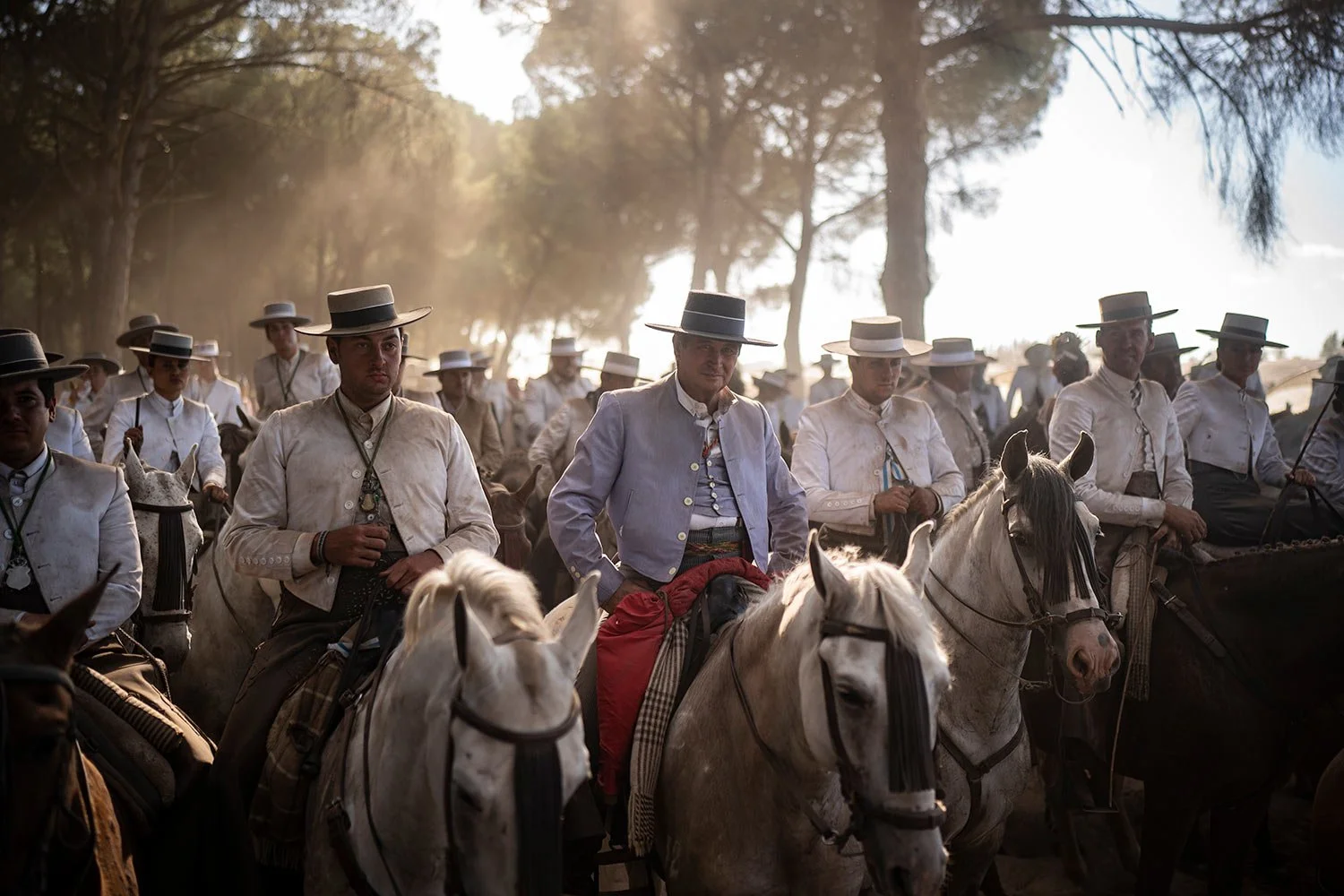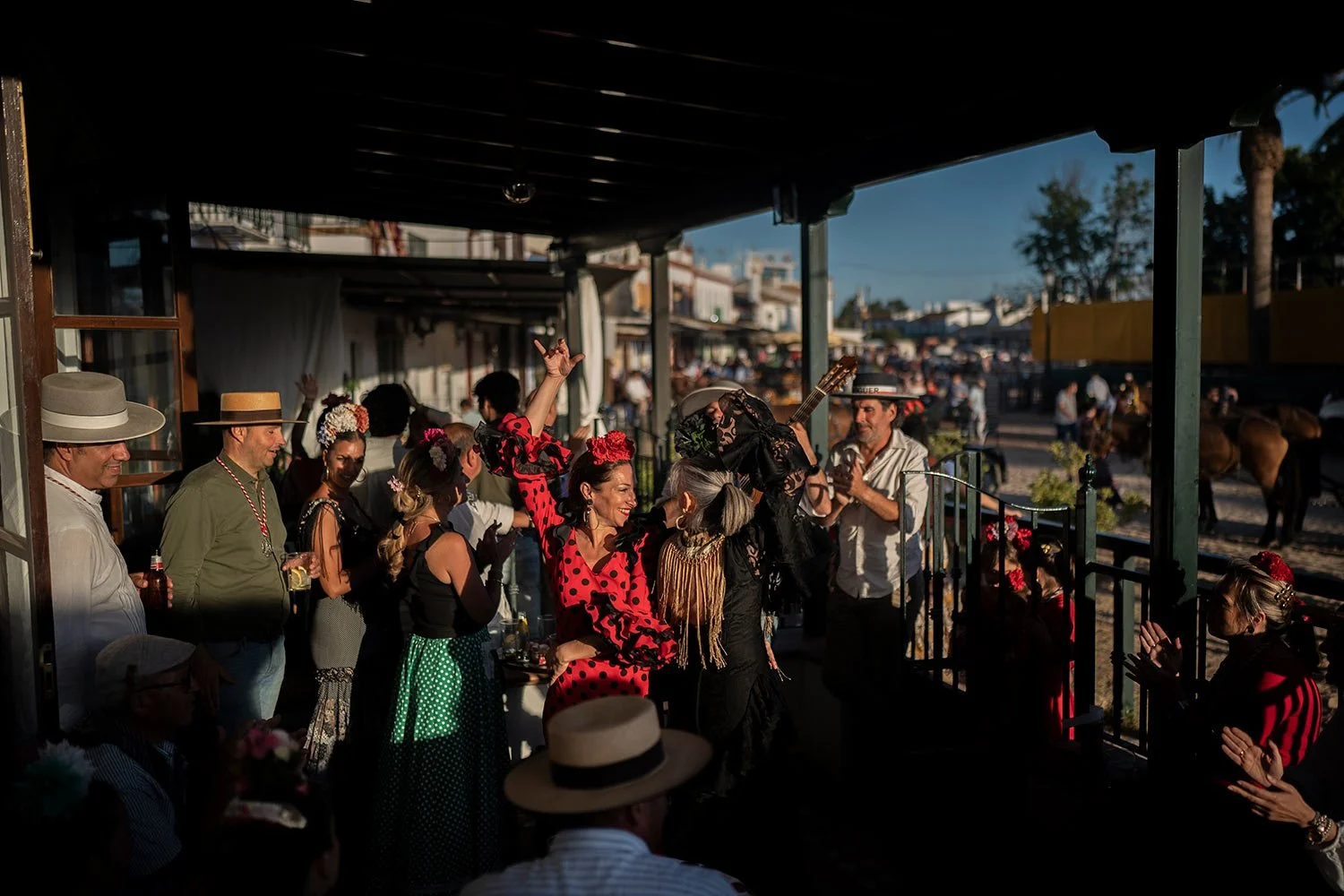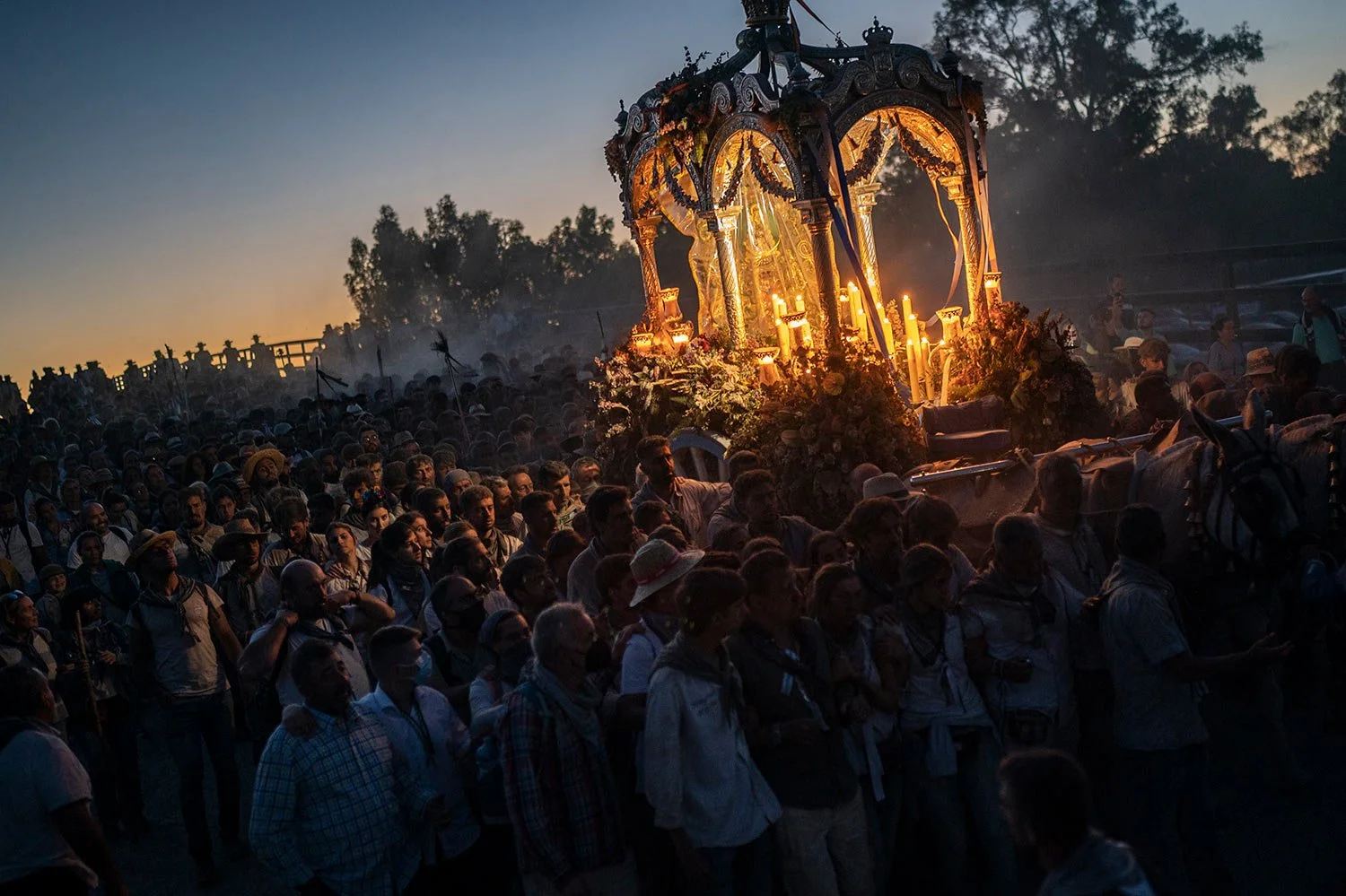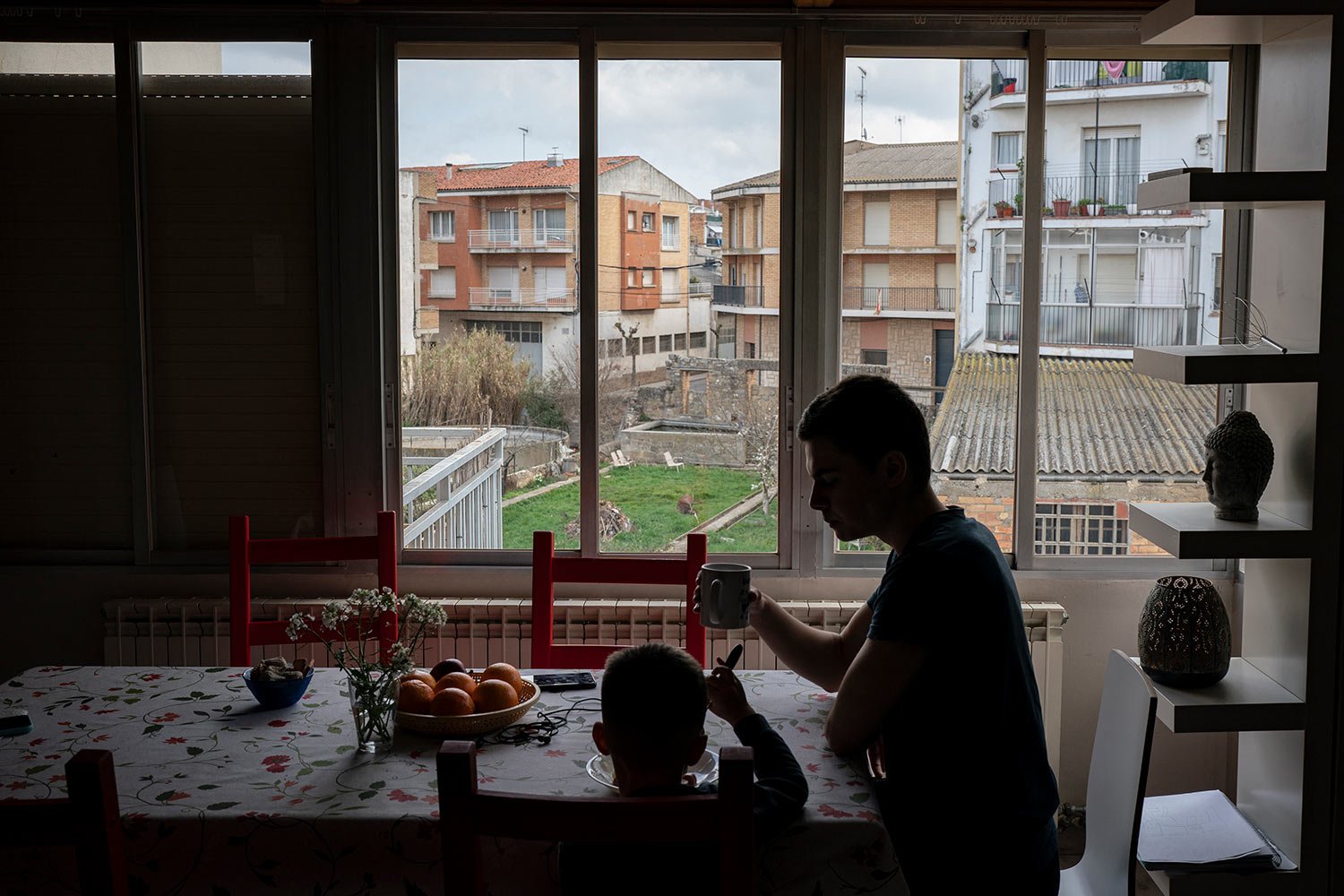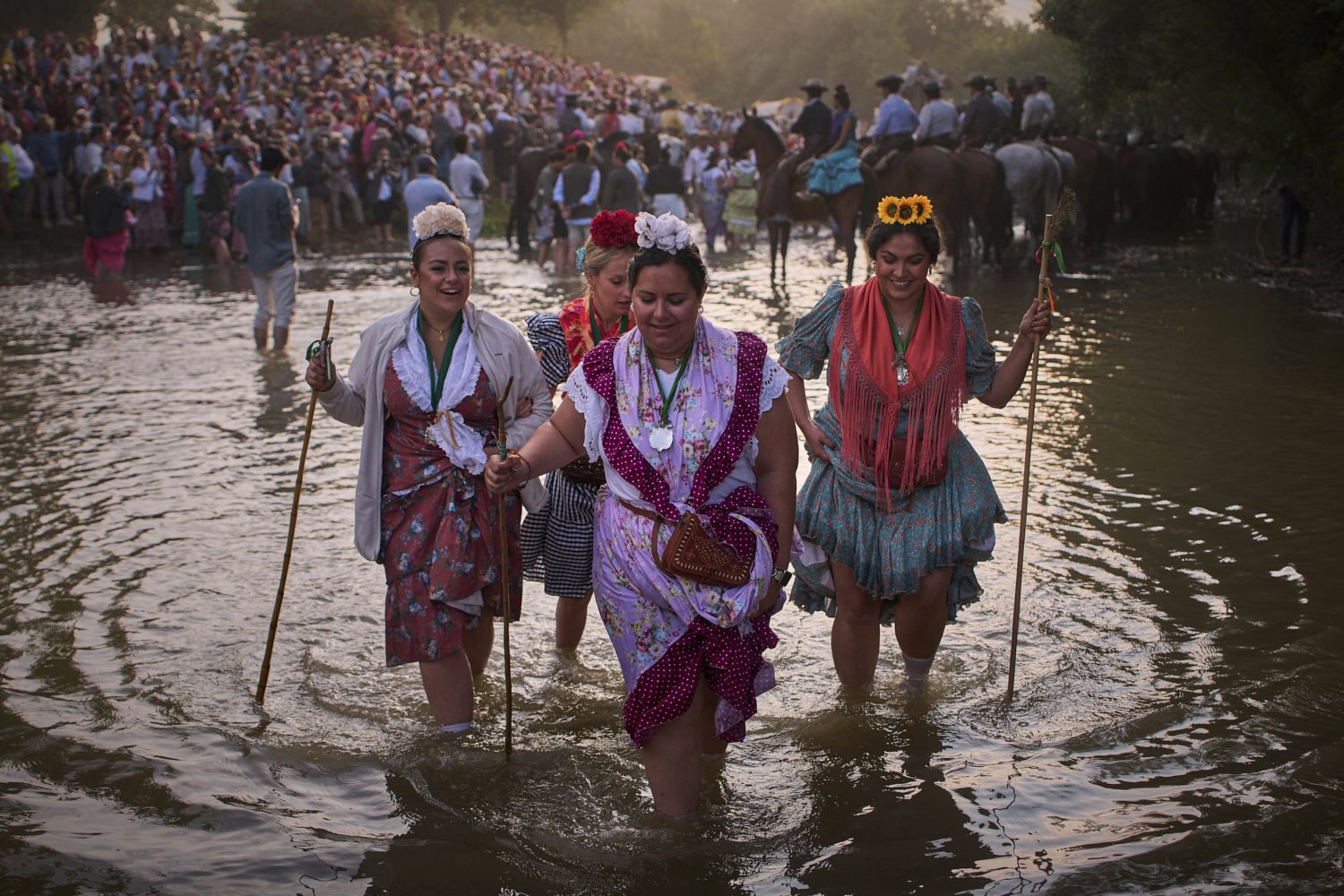Spain's Rocío pilgrimage party returns after COVID hiatus

After a two-year hiatus forced by the pandemic, tens of thousands of pilgrims — many of them outfitted in tiered flamenco dresses, crisp riding suits and wide-brimmed Cordoba hats — descended on the tiny Spanish village of El Rocío to take part in riotously colorful and ancient festival, la Romería del Rocío, or the Rocío virgin pilgrimage.
For several days, droves of people — entire families or groups of friends — wind their way across different country paths and roads, many of them on foot while others go by horse or in elaborately decorated horse-drawn wagons or caravans, kicking up clouds of dust in the sun-baked countryside of southern Andalucía as they go.
DesirÈe M·rquez Carrasco, from Hermandad de Huelva, rides her horse in the Donana National Park on their way to the shrine of El Rocio in Almonte, Spain, on Friday, June 3, 2022, during the annual pilgrimage in which hundreds of thousands of devotees of the Virgin del Rocio converge in and around the shrine. (AP Photo/Joan Mateu Parra)
Pilgrims gather as they pray on their way to the shrine of El Rocio in Villamanrique, Spain, on Saturday June 4, 2022, during the annual pilgrimage in which hundreds of thousands of devotees of the Virgin del Rocio converge in and around the shrine. (AP Photo/Joan Mateu Parra)
Pilgrims ride their horses in the Donana National Park on their way to the shrine of El Rocio in Almonte, Spain, on Friday, June 3, 2022, during the annual pilgrimage in which hundreds of thousands of devotees of the Virgin del Rocio converge in and around the shrine. (AP Photo/Joan Mateu Parra)
A pilgrim shows his medal of Virgin del Rocio as they walk in the Donana National Park on their way to the shrine of El Rocio in Almonte, Spain, on Friday June 3, 2022, during the annual pilgrimage in which hundreds of thousands of devotees of the Virgin del Rocio converge in and around the shrine. (AP Photo/Joan Mateu Parra)
The pilgrimage, organized by dozens of “brotherhoods” is a veritable explosion of colour and revelry. A heady mix of religion and raucous celebration, the style of dress, food, drink and song are as much a part of the festival as devotion to the virgin. The pilgrims eat out in the countryside and often camp out there, too.
The pilgrimage attracts young and old, and the pervading feeling this year was one of joy at being able to once again celebrate a pilgrimage that is iconic to Andalusian culture.
“The Rocío is something that cannot be explained. You have to come here and feel it,” said 15-year-old Antonio Carlos Martín Duque, who rode a horse.
Antonio Molina Sánchez, 47, from nearby Huelva city, described his family's delight in making the pilgrimage after two years of cancellations. "For a family like ours that live for it — a ‘Rociera’ family — it´s joy.”
Pilgrims sing on their way to the shrine of El Rocio in Vado del Quema, near Aznalcázar, Spain, on Thursday June 2, 2022, during the annual pilgrimage in which hundreds of thousands of devotees of the Virgin del Rocio converge in and around the shrine. (AP Photo/Joan Mateu Parra)
Pilgrims gather as they pray on their way to the shrine of El Rocio in Villamanrique, Spain, on Saturday June 4, 2022. (AP Photo/Joan Mateu Parra)
A man cries as he prays in the Donana National Park on his way to the shrine of El Rocio in Almonte, Spain, on Friday June 3, 2022. (AP Photo/Joan Mateu Parra)
Pilgrims rest on their way to the shrine of El Rocio in ''El Vado del Quema'', near Aznalcázar, Spain, on Thursday June 2, 2022. (AP Photo/Joan Mateu Parra)
Pilgrims walk in the Donana National Park on their way to the shrine of El Rocio in Almonte, Spain, on Friday June 3, 2022, during the annual pilgrimage in which hundreds of thousands of devotees of the Virgin del Rocio converge in and around the shrine. (AP Photo/Joan Mateu Parra)
The pilgrimage, organized by dozens of “brotherhoods” is a veritable explosion of colour and revelry. A heady mix of religion and raucous celebration, the style of dress, food, drink and song are as much a part of the festival as devotion to the virgin. The pilgrims eat out in the countryside and often camp out there, too.
The pilgrimage attracts young and old, and the pervading feeling this year was one of joy at being able to once again celebrate a pilgrimage that is iconic to Andalusian culture.
“The Rocío is something that cannot be explained. You have to come here and feel it,” said 15-year-old Antonio Carlos Martín Duque, who rode a horse.
Antonio Molina Sánchez, 47, from nearby Huelva city, described his family's delight in making the pilgrimage after two years of cancellations. "For a family like ours that live for it — a ‘Rociera’ family — it´s joy.”
Pilgrims ride their horses on their way to the shrine of El Rocio in Villamanrique, Spain, on Saturday June 4, 2022, during the annual pilgrimage in which hundreds of thousands of devotees of the Virgin del Rocio converge in and around the shrine. (AP Photo/Joan Mateu Parra)
Pilgrims walk in the Donana National Park on their way to the shrine of El Rocio in Almonte, Spain, on Friday June 3, 2022, during the annual pilgrimage in which hundreds of thousands of devotees of the Virgin del Rocio converge in and around the shrine. (AP Photo/Joan Mateu Parra)
This year's procession was cut short by several hours after the float developed a structural problem, forcing officials to bring back the virgin to its chapel, or shrine.
The roots of the Romería del Rocío pilgrimage stretch back centuries when, as the legend has it, a statue of the Virgin Mary was stumbled upon in a hollowed-out tree trunk near the town of Almonte, which the village of Rocío belongs to.
Pilgrims sing and dance in El Rocio in Almonte, Spain, on Saturday June 4, 2022, during the annual pilgrimage in which hundreds of thousands of devotees of the Virgin del Rocio converge in and around the shrine. (AP Photo/Joan Mateu Parra)
A pilgrim lights a candle in the sanctuary of the virgin of the Rocío in the village of El Rocío in Almonte, Spain, on Saturday June 4, 2022, during the annual pilgrimage in which hundreds of thousands of devotees of the Virgin del Rocio converge in and around the shrine. (AP Photo/Joan Mateu Parra)
Pilgrims make their way to the shrine of El Rocio in Villamanrique, Spain, on Saturday June 4, 2022, during the annual pilgrimage in which hundreds of thousands of devotees of the Virgin del Rocio converge in and around the shrine. (AP Photo/Joan Mateu Parra)
With AP News story, Spain’s Rocío pilgrimage party returns after COVID hiatus, by Joan Mateu Parra

